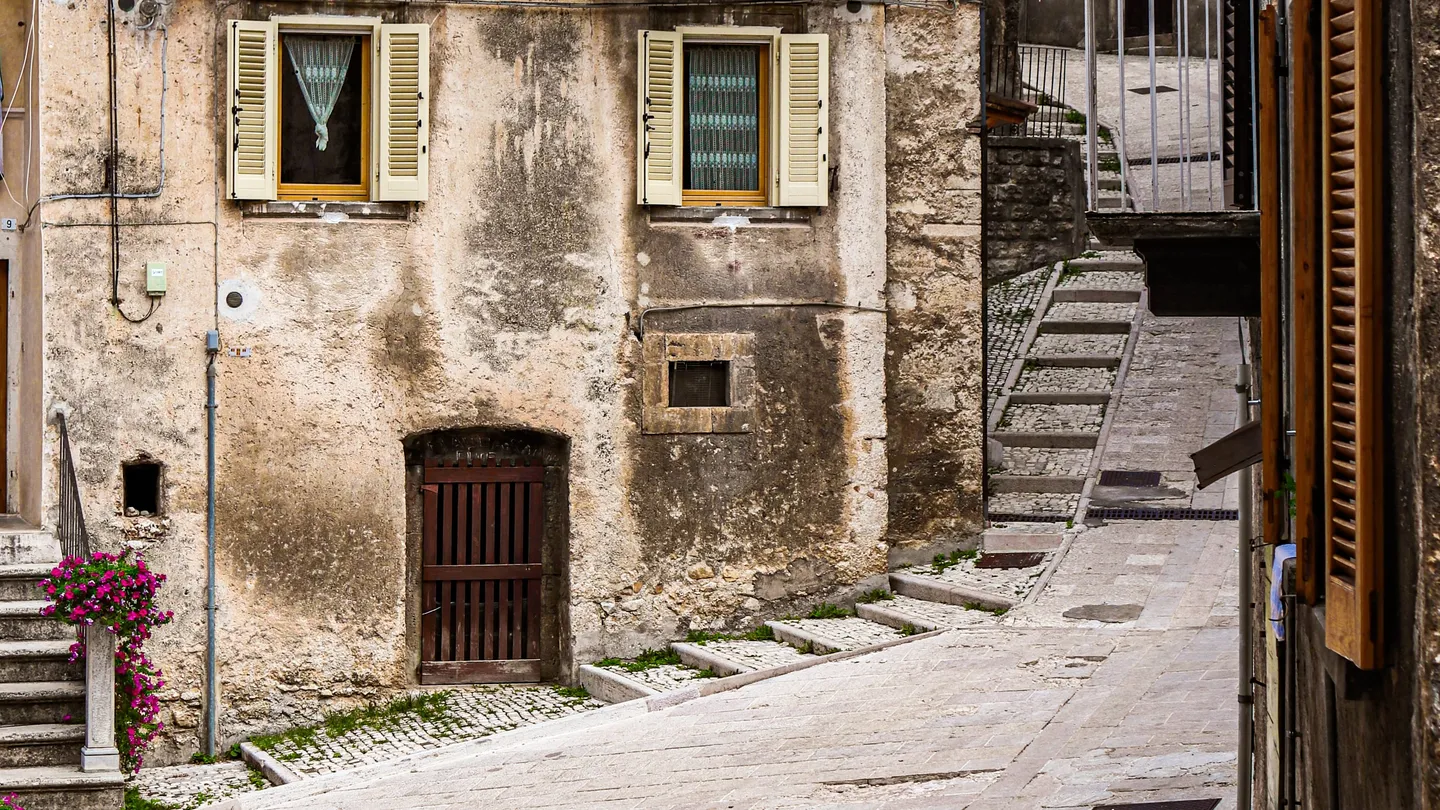The 1 Euro Homes trend that Revitalize Rural Communities in Europe

Photo by Vincenzo De Simone on Unsplash
The initiative to sell houses for a symbolic 1 Euro to address population decline in rural towns began in Italy 2008. Over fifteen years, this approach has spread globally, reaching countries like Switzerland, Spain, Croatia and France. Initially targeting locals, these campaigns are increasingly focused on attracting digital nomads.
Italy Leading the Way in Revitalizing Abandoned Villages
To combat the significant population decline, Italy has been a forerunner in the innovative approach of selling homes for a nominal fee.
The country saw a drastic reduction in its population by 384,000 in 2020, marking the most significant decline in more than a century. This demographic shift led to a surplus of abandoned homes, particularly in rural and remote villages.
These homes, often several decades old and in varying states of disrepair, are offered by municipalities for a symbolic price of 1 Euro. This initiative aims to attract new residents and investors to breathe life into these forgotten communities. However, while the purchase price is minimal, restoring these homes is significant.
Prospective buyers must be prepared for the reality of renovating these properties. The typical home available under this scheme is about 700 square feet, often requiring comprehensive rehabilitation to make them habitable and compliant with current building standards. The costs for such renovations can be substantial, with estimates often reaching around 30,000 Euros. These expenses cover everything from structural repairs to modern amenities and compliance with local codes.
Maurizio Berti, representing Case A 1 Euro, underscores the importance of prospective buyers visiting Italy to understand the scope of their investment. Viewing properties in person provides a clearer picture of the restoration work needed and the charm of the local communities. It also allows buyers to engage directly with local authorities and artisans who play pivotal roles in the renovation process.
The Italian €1 home initiative is more than a real estate transaction; it’s a cultural and communal revival. Buyers are not just purchasing a property; they are investing in the local community, contributing to its revitalization, and, in many cases, becoming part of the village’s social fabric. This aspect particularly appeals to those looking to connect with traditional Italian culture and lifestyle.
As the initiative continues to evolve, it’s attracting diverse buyers, from retirees looking for a tranquil lifestyle to young families seeking a connection with nature and, increasingly, digital nomads drawn to the rustic charm and slower pace of life in these rural locales. The blend of affordable property prices and the allure of Italian culture makes this initiative a unique and attractive proposition for people from various walks of life.
However, potential buyers should be prepared for the challenges of rural living in Italy, from language barriers to limited access to modern conveniences. This initiative’s success hinges on new residents’ willingness to embrace these challenges and immerse themselves in the revitalization of these historic villages.
France’s Emergence in the €1 Home Market: A New Chapter in Rural Revitalization
Following Italy’s lead, France has embarked on its own journey to rejuvenate its rural landscapes through the €1 home market. Though newer than Italy’s, this initiative is gaining momentum and showcases France’s commitment to reviving its quaint, rural communities.
One notable example is the offering in Saint-Amand-Montrond, a charming town located approximately 300 kilometres south of Paris. Here, homes around 1,000 square feet are available for the symbolic sum of 1 Euro. This initiative presents a unique opportunity for those seeking to be part of French rural life away from the bustling urban centres.
However, the process of acquiring these homes comes with specific commitments. The French model mandates that buyers must purchase these properties and invest their time and resources into them. The buyers must start renovations within six months of the purchase, with a completion deadline of two years. This stipulation ensures that the properties are quickly restored and habitable, contributing to the vitality and vibrancy of the community.
Additionally, these homes are intended to foster a sense of community and long-term residency. Therefore, using these properties for short-term rentals, such as Airbnb, is prohibited. This rule is designed to prevent the commercialization of these homes and ensure they contribute to the permanent population of the village, thereby maintaining the authentic rural charm and community spirit.
The French approach to the €1 home market is not just about selling properties at a nominal fee; it’s an endeavour to attract individuals and families genuinely interested in becoming part of a community. It appeals to those who appreciate the rustic beauty of rural France and are willing to contribute to the preservation and enhancement of these traditional villages.
While the renovation cost can be a significant investment, it pales compared to property prices in urban France. Moreover, renovating these homes offers a unique opportunity to blend traditional French architecture with modern living amenities, creating a living space that is both charming and comfortable.
Prospective buyers should also consider the broader aspects of rural living in France. This includes embracing the local culture, learning the French language, and adapting to a lifestyle significantly different from urban living. The rewards, however, are immense, offering a serene lifestyle amidst France’s picturesque landscapes, rich history, and renowned culinary traditions.
Croatia’s Unique Approach to Affordable Housing: Reinvigorating Rural Communities
Croatia, joining the trend of revitalizing rural areas, offers a distinct model in the affordable housing market. The country has introduced a program to sell houses for as little as 1 kuna (approximately €0.16), with Legrad, a picturesque village near the Hungarian border, exemplifying this initiative.
Legrad’s offer stands out not just for its low price but also for its targeted demographic and supportive policies. The program is designed to attract younger, financially stable individuals and families by setting an age limit of under 40 years for prospective buyers. This approach aims to infuse these rural areas with new energy and potential for long-term community development.
Moreover, the Croatian model emphasizes commitment to the community. Buyers must make a 15-year ownership commitment, ensuring that the benefits of this program extend beyond mere property restoration to fostering stable, revitalizing communities. This long-term perspective is vital in guaranteeing rural population growth and development sustainability.
In addition to the nominal purchase price, Legrad’s government contributes significantly to the restoration process, offering 20% renovation support, up to 35,000 Kunas (around 5,000 Euros). This financial assistance is a substantial incentive for buyers, making the renovation process more feasible and less daunting financially. It demonstrates the government’s commitment to attracting new residents and supporting them in their efforts to restore and improve these properties.
This initiative presents a unique opportunity for individuals and families to own a property in a serene, rural setting at an affordable price while contributing to the revitalization of a community. It’s particularly appealing to those who seek a slower pace of life, a closer connection to nature, and a chance to be part of a tight-knit community.
Prospective buyers should, however, be aware of the challenges and joys of rural living in Croatia. These include adapting to local customs and language, accessing modern amenities, and integrating into the local community. However, the rewards of this lifestyle are plentiful, offering a chance to live in one of Europe’s most beautiful countries, known for its stunning landscapes, rich history, and warm, welcoming communities.
Ireland’s “Our Living Islands” Initiative: A Bold Step Toward Rural Revival
The Republic of Ireland, in a significant move to address depopulation in its rural islands, has launched the ambitious “Our Living Islands” initiative. Announced in June 2023, this program is a targeted effort to repopulate about 30 islands that have experienced dwindling populations over the years. Recognizing the unique challenges and opportunities these islands present, the Irish government has set out to attract new residents through a substantial financial incentive.
Key to this initiative is the provision of grants up to 84,000 Euros, earmarked specifically for the restoration of derelict properties. This significant financial support is designed to lower the barriers for those interested in renovating and revitalizing these historic properties. The goal is to make these islands viable options for living and working, thereby ensuring their cultural and historical preservation.
However, the initiative has its prerequisites. For non-citizens interested in participating in this revitalization effort, there is the requirement to navigate the complexities of Irish immigration law. Applicants must secure long-term residency, which underscores the government’s commitment to ensuring that these new residents are prepared for a long-term commitment to island life.
Life on Ireland’s rural islands offers a unique experience marked by stunning natural beauty, rich cultural heritage, and a slower pace of life. However, potential residents must be prepared for the realities of island living. This includes limited access to modern conveniences, reliance on weather-dependent transportation, and the need to integrate into close-knit, often traditional communities.
This initiative is about more than just repopulating areas with dwindling numbers; it’s about fostering sustainable communities. The Irish government’s approach reflects an understanding that repopulation efforts must be accompanied by support for local economies, infrastructure development, and the preservation of the unique cultural identities of these islands.
The “Our Living Islands” initiative is an invitation to be part of Ireland’s rural renaissance, contribute to preserving its island communities, and enjoy the distinct lifestyle these locales offer. It’s an appealing proposition for those seeking a deeper connection to nature, a sense of community, and a lifestyle that contrasts sharply with urban living.
Conclusion
The 1 Euro home trend, initially aimed at combating rural depopulation, has evolved into a global movement. These initiatives offer unique opportunities for individuals to own properties at nominal prices, provided they commit to renovating and revitalizing these homes. This movement benefits buyers and plays a crucial role in preserving the cultural heritage of rural communities worldwide.
